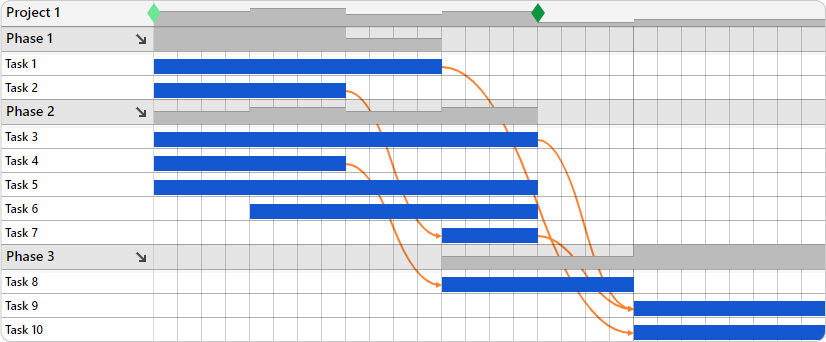Effective project management is the backbone of successful businesses and initiatives. However, even the most seasoned project managers can find themselves entangled in the web of common pitfalls that hinder progress, derail timelines, and threaten project success. In this blog post, we’ll explore the top project management pitfalls and discuss strategies to steer clear of them.
What are the Most Common Project Pitfalls?
Managing a successful project means doing a whole lot more than coming up with a good plan and making sure the work gets done on time. Instead, if you really want to be a successful project manager, you’ve got to avoid these common pitfalls at all costs…
Not Talking to Your People
Just because you’re in charge doesn’t mean you can’t benefit from other people’s point of view. In fact, the best brainstorming sessions come from a variety of sources! That’s because your employees can help you think of different things (or even just different angles) that you never would have been able to think of all by yourself.
As an added benefit, getting everyone else’s input boosts morale and productivity. It means people feel like they’re part of a team, instead of just cogs in the machine. In the end, your employees will probably do a much better job if they know that you value their opinions and take their ideas seriously.
The communication can’t end when your planning does, though. Good project managers will take feedback during the project just as seriously as they do before the project starts. That way, if any issues pop up along the way, you can do whatever it takes to correct them.
How to improve?
Just remember that not all communication is created equally. Dysfunctional communication processes – such as adding extra meetings or sending tons of emails are not going to add anything good to your project team’s outcome. Quite the opposite. Instead, look for ways to streamline communication while also being actively engaged. Try:
Not Dividing Up the Work

As a project manager, it can be tempting to want to do everything yourself or, at least, personally oversee everything – especially if your head is the one on the chopping block is something goes wrong!
However, failing to delegate is another big morale-killer. It makes people think that you don’t trust them or that you think they’re not capable.
Plus, failing to delegate can slow down the entire project. After all, you’re being paid to manage the project – not do the whole thing. If you could do it all by yourself, you wouldn’t need employees in the first place! The last thing you need is to become a bottleneck in your own project.
How to improve it?
Projects fail for a variety of reasons. But a poor division of labor is at the top of the list. Deciding on your team’s roles and responsibilities should come at the very beginning of the project scheduling stage. And be monitored or even reevaluated throughout. Remember to:
- Set up project KPIs and milestones and monitor when these are hit.
- Monitor your resource’s utilization throughout and adjust if people are working too much or too little.
- Make sure that task dependencies are set up, so everyone knows the order that their work should be completed.
- Don’t be afraid to ask for help. Outsourcing or hiring freelancers to help finish is usually a viable option.
Poor Resource Management
Resource mismanagement is a common pitfall that project managers must reckon with early in the scheduling stage and continuously afterwards. That’s because behind every project are the resources tasked with completing the work. But it’s not enough to simply allocate anybody to the job. Joe the accountant probably isn’t the best truck driver. While Audrey in HR might be great at her job, but isn’t the best for a customer-facing role.
There’s plenty of reasons why resource management is important. And without a proper resource management plan, it’s like trying to steer a ship blindfolded.
When there’s a lack of resource management, projects will inevitably suffer. It leads to overworked teams, missed deadlines, and compromised project quality. So it’s essential to identify the required resources, allocate them appropriately, and continuously monitor and adjust as needed. Regularly reassess resource needs throughout the project to ensure a balanced workload.
How to improve it?
Project managers must identify the necessary resources, including personnel, equipment, and technology, and allocate them judiciously. Having a general resource pool that can be organized and divided up will go a long way in creating a clear resource management plan. Which in turn makes it easier when scheduling projects and tasks.
Not Being a Leader
There is a huge difference between being the boss and being a leader. If you want to be a good project manager, you need to strive to be a leader.
What exactly does that mean?
Leaders don’t just hand out instructions. They also inspire their employees and keep their passion going even when things get rough. Real leaders create an atmosphere where people want to move forward and be successful – not just treat their work like any ol’ project.
In the end, leaders generate much better results, and they have much happier employees, who finish projects on time and are eager to start on the next one.
How to improve it?
Good leaders are not always born. And even those who are can stand to brush up on their skills every now and then. Avoid succumbing to a major pitfall when managing your next project by:

To most project managers, none of this should be new information. Perhaps you’re trying to implement these better work processes now, but you just don’t have the right tool to do so. Ganttic is high-level project management software.
Not only will you have a clear visual overview of your projects and tasks, but can assign your resources and team to specific work. That way you’ll have a clear timeline of the project schedule and a clear breakdown of people’s roles along the way. Either way, you’ll have the tool in hand to avoid those common pitfalls in project management.
Learn more about Ganttic by signing up for a free demo. Or try it yourself free for 14 days.